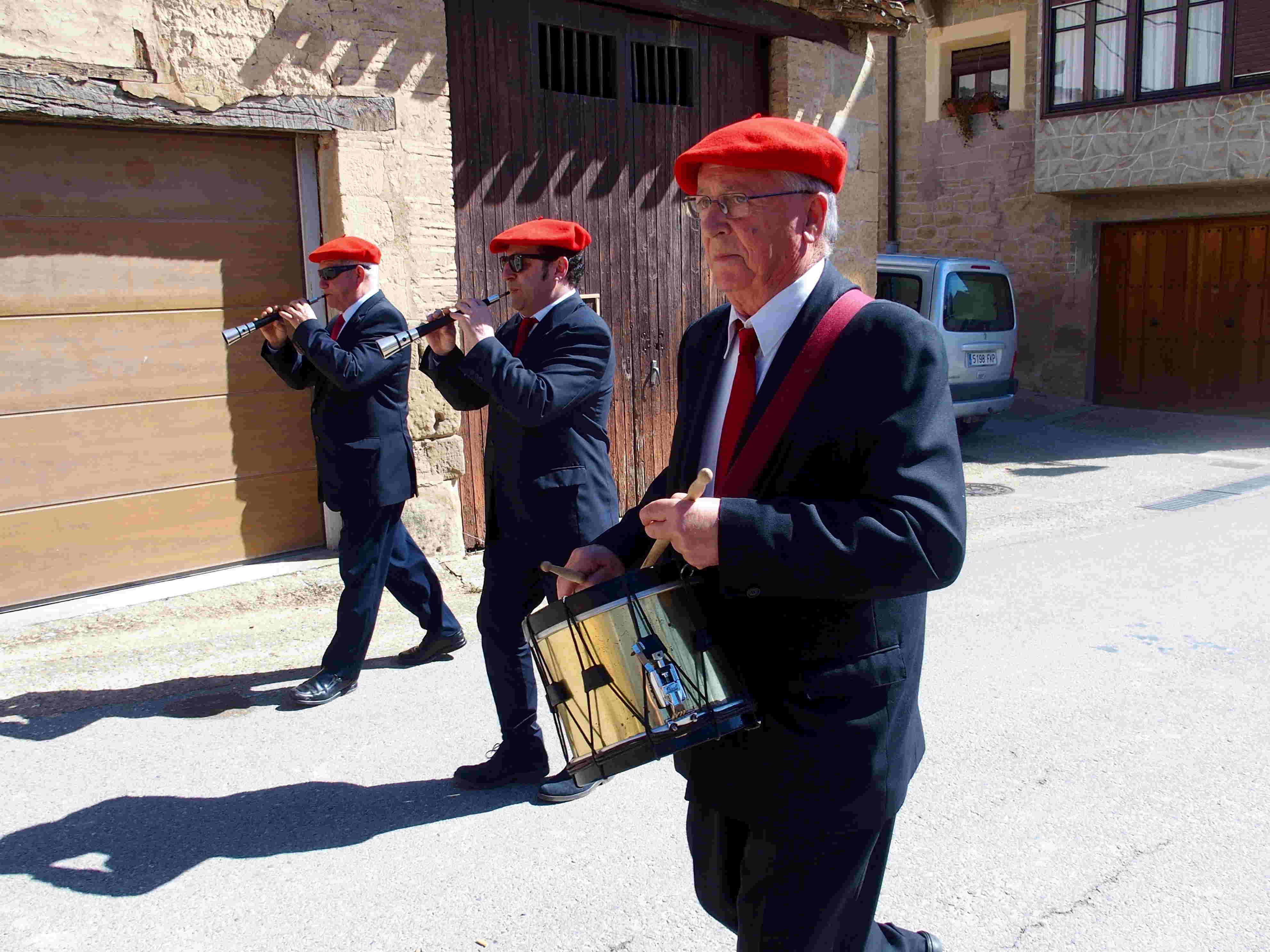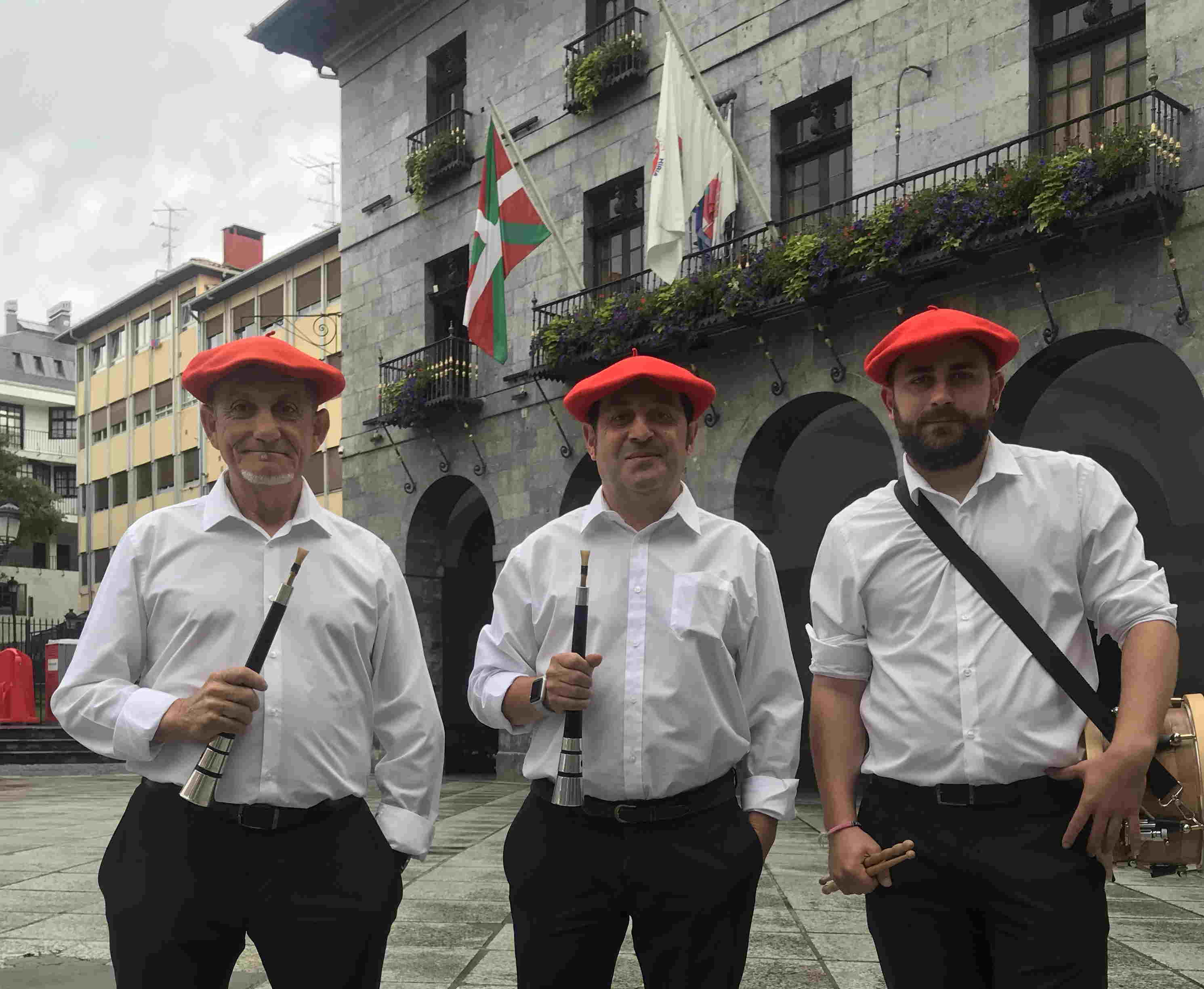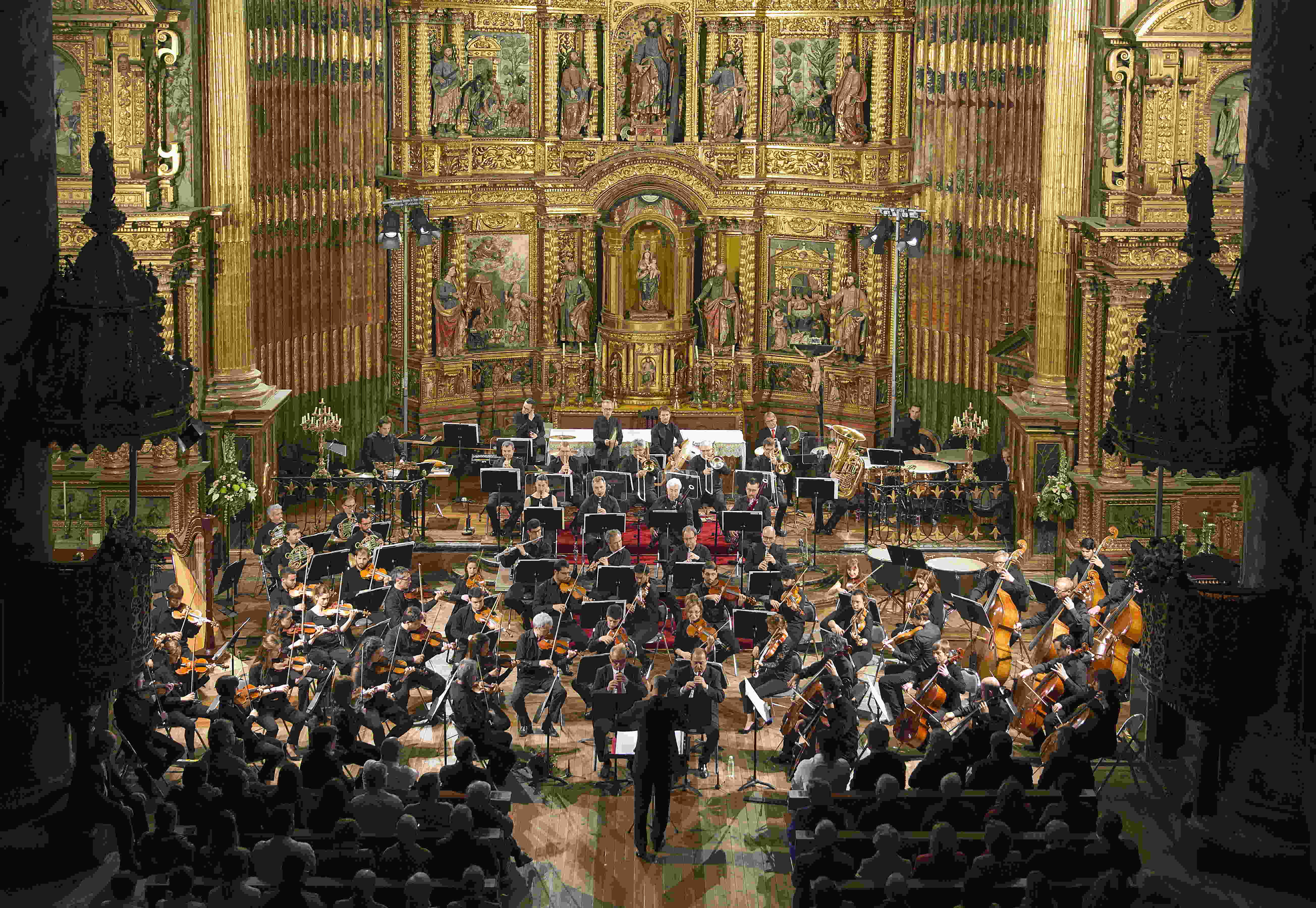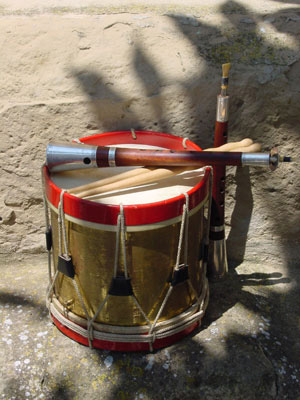You are here
Pipes and Pipers
We believe it is important to dedicate a section to the pipes, since they have developed into the most important local instrument in Rioja Alavésa. In the documental archives of Elciego the pipes are, with the exception of the organ in religious acts, the instrument which accounted for most payments during the 17th and 18th centuries. The presence of the pipes was obligatory in all religious and festive acts in the town.
In the 19th century, and particularly at the beginning of the 20th century, pipes often had to take second place to musical bands, which were more colourful and fashionable. However, the pipes did not abandon this leading musical role in the festive traditions of the town. As our grandparents often say: "there is no party without pipes". And, naturally, no resident of Elciego would dream of performing the old dances without the presence of the pipes.
With this brief introduction we are going to describe this relationship: Pipes-Pipers-Elciego.
Pipers in the 17th and 18th centuries
Given the absence of documentation from previous centuries in the municipal archives, we shall offer a brief analysis of the centuries for which documentation does exist. We do not believe it is necessary to reproduce all the listed payments to pipers, but rather we shall briefly describe the conclusions we have reached from the documentation obtained.
It appears that the pipers were not locals, since payments were assigned for a day's work and food. Moreover, some payments specify "the visiting piper" (years 1679-1680), without any variation from the amounts assigned in other years.
The performer was a single person, since the piper duo was after the mid-18th century.
The presence of the drummer is detailed for the first time in the 18th century.
A piper is named in the year 1707: Juan Jiménez (we are considering the possibility that he may be an Elciego local, something which the parish archive birth and death records will clarify).
The term Dulzaina, which would then be used to refer to the pipes, appears in payments for the first time well into the second half of the 18th century.
The piper appeared every year in the festivities of Santa Isabel and of the Virgin in the month of September, and occasionally as a result of novenas or rogations in the procession and dances.
Pipers in the 20th century
Throughout the first half of the current century the pipers were present mainly in the September festivities (Dianas, Pasacalles, Bailables and the execution of the Danzas). The pipers came from the neighbouring towns of Villabuena and Laguardia two places where the pipes acquired significant development, extending and maintaining our music and dances throughout the area. Until the 1940s the pipers from Villabuena were entrusted with this task, whilst Laguardia pipers took over later on.
It is precisely at this time, when these pipers had started to fade away (Perfecto Gil had stopped playing in Villabuena and Jesús Martínez endured a lengthy illness which finally took his life),and the continuity of the instrument in the area was in jeopardy, that the Pipers of Elciego appeared.
We could say that they came about to support the Danzas of Elciego and as a result of their concern for local music. In 1977 Jesús Fernández Ibañez and Juan Carlos Gómez Palacios formed the first pair of pipers, accompanied by the drum of Juantxu Gómez Palacios. Their beginnings, as always, were particularly difficult.
Jesús had to leave Elciego for work reasons, whilst Juan Carlos found the musical accompaniment of his brother, who began to play the pipes. José Luis Gallego took charge of the drum, replaced occasionally by Víctor de Marcos. Their performances were ever more numerous, and they collaborated with other dance groups of the area as well as being called on to take part in festivities throughout Euskalerria (Vitoria-Gasteiz, Azpeitia, Azkoitia, Baiona, Bilbao, Pamplona, Tudela, San Juan de Luz...); moreover, they have performed in Barcelona, Villafranca del Penedés, Madrid, Seville, Tenerife, and in the ancient music festivals of Najera and Brussels.
They have taken part in concerts along with the Municipal Bands of Vitoria-Gasteiz, Elgoibar, Laguardia, Elciego, Azpeitia... in addition to collaborating on different recordings.
In 1987 they recorded their first record, ARABAKO DANTZAK, which brought together Danzas from Laguardia, Villabuena, Páganos and Yécora. This work culminated in 1993 with the recording of their second record, ARABAKO DANTZAK-II, which included Danzas from Elciego, Kuartango, Oion and Pipaón. With this record they had now recorded all the Danzas of Álava for pipes, as played today in each of their respective towns.
In 1997 they recorded their third record. Whilst the previous two records were compilations of Álava Danzas, this new work was dedicated to former pipers of the neighbouring locality of Laguardia NICOLÁS GARCÍA and JESÚS MARTÍNEZ. To this end, they made a selection from among the 760 musical scores of the repertoire of Nicolás García, which Jesús Martínez inherited and broadened, the result being 22 tracks of the most widely used rhythms of the time, along with two innovative arrangements: one for Pipes and Band, and another for Pipes and a Latin music group. It was then that the idea of collaborating with the group "The Latin Gasteiz Band" came about.
The group GAITEROS DE ELCIEGO & THE LATIN GASTEIZ BAND.
The two collaborated on the record dedicated to Nicolas Garcia, combining the sound of the pipes with metal wind instruments, bass guitar, piano and a wide range of Latin percussion instruments, leading to a series of concerts throughout Euskaherria. In 1999 they were reunited to take part on the record TRIBUTE TO JULIAN ROMANO.
They are currently working on a record to commemorate their 25th anniversary in 2003. They also envisage publishing a book of musical scores of their repertoire which will include a review of their 25 years as Pipers of Elciego and an exhibition which will bring together photography, anecdotes, newspaper articles, instruments, etc. Further information will be available at this website.
Check them out on the YouTube channel Gaiteros de Elciego.






